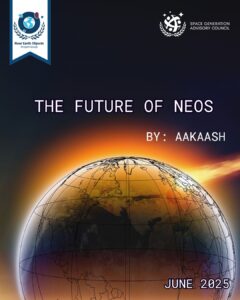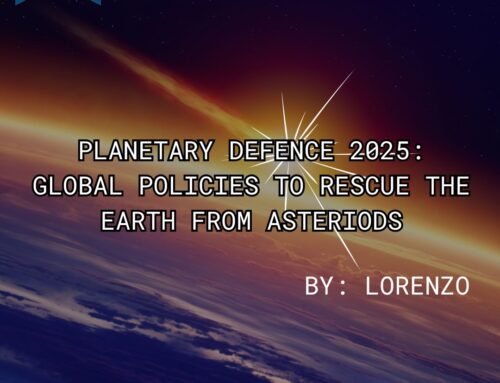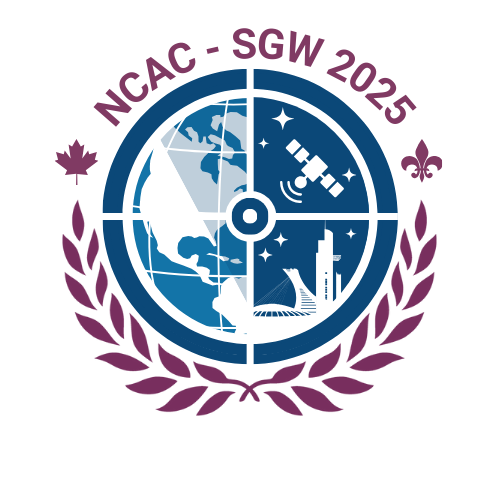Introduction:
There was a time when the night sky was seen as immutable, distant, and entirely detached from human fate. But as our understanding of the cosmos deepened, so too did our awareness of the lurking dynamism above. Among the many moving bodies overhead, one category of objects – Near Earth Objects, also referred to as NEOs, a group of asteroids and comets whose unusual orbits occasionally bring them close to our planet – has become a subject that scientists have begun to look up to. One reason for that is the fact that these celestial wanderers offer windows into the primordial conditions of the early solar system. But more importantly, it is because they pose existential risks and hold untapped economic potential. And as we peer into the future of NEO research, the story that unfolds is something that lies at the intersection of technology, scientific curiosity, and a growing need for global authority in the space sector.
A Constellation of Watchers:
In order to track and study these NEOs, we currently make use of an array of powerful observatories across the globe, driving international collaborative efforts. NASA’s Centre for Near Earth Object Studies (CNEOS) and ESA’s NEO Coordination Centre (NEOCC) act as the jewels in the crown, helping us track and project the orbits of thousands of known NEOs. Additionally, ground-based surveys like PanSTARRS and Catalina Sky Survey scan the skies with wide field optics and use automated detection algorithms to help us discover hundreds of NEOs each year. But, despite this network, we remain vulnerable. Small but potentially devastating NEOs can approach from blind spots, especially from the sunward direction, evading even our best instruments. Although NASA’s NEOWISE [1], which operated in the infrared spectrum, had served as a quick fix by adding crucial size and thermal data, it had reached the end of its operational life a while ago, and the scientific community faces mounting pressure to upgrade our planetary defence systems.
NEOWISE: A space-based infrared telescope repurposed to detect and characterise near-Earth objects, contributing to both planetary defence and solar system science.
A New Era in Sight: Missions That Will Change Everything
Firstly, we have got the NEO Surveyor [2] – built for space-based observation, it uses infrared from a solar orbit to detect asteroids more effectively than Earth-bound telescopes ever could. When launched, it promises to identify over 90% of potentially hazardous NEOs larger than 140 meters. Its capacity to detect heat rather than reflected light enables it to spot dark, low-albedo asteroids that elude visual surveys.
While this is going on, ESA’s Hera mission [3] follows in the wake of NASA’s successful DART impact. After NASA’s DART spacecraft crashed into the small moonlet Dimorphos to test if we could change an asteroid’s path, Hera is heading in to take a closer look. It will carry several instruments, including high-resolution cameras, radar systems, and CubeSats (Milani and Juventas) to study the impact site, measure how the asteroid’s orbit changed, and even peek inside to learn more about its structure. By doing this, Hera gives us the detailed information we need to figure out how effective these kinds of kinetic impact asteroid deflection attempts really are.
Illustration of Hera approaching Dimorphos to investigate the aftermath of NASA’s DART impact. Image credits: ESA
Apart from this, small spacecraft are entering the fray too. Missions like NEA Scout mark the beginning of a shift, where small, solar sail CubeSats could soon be doing big jobs like asteroid reconnaissance without breaking the bank and serve as alternatives for large and ambitious missions.
The Art of Deflection
Since the DART mission made headlines for proving that we can nudge an asteroid [4], there has been a surge in interest surrounding kinetic impactors. But what stemmed from further investigation was that these impactors are effective only under specific conditions – given enough warning and assuming the asteroid is neither too massive nor too loosely bound.
Conceptual rendering of DART targeting Dimorphos for asteroid deflection. Credit: NASA
Here is where other options enter the play. One of them is gravity tractors, which exert a steady but minuscule pull on a target over months or years. The other topic of common discussion is laser ablation techniques [5], which involve heating the surface to create reactive jets of vapour, creating a push force that slowly alters the asteroid’s momentum. Even nuclear devices, once relegated to science fiction, remain under consideration for dire scenarios.
Charting the Chaos:
But before we can deflect an NEO, we must predict its location so our mission doesn’t miss by a mile or light years. Their orbits are chaotic, perturbed by gravitational tugs from planets and even subtle forces like the Yarkovsky effect [6], which is a thermal push resulting from uneven heat emission, and hence it requires immense computational finesse.
To navigate this uncertainty, scientists employ statistical models, propagating orbital elements through time with Monte Carlo simulations. But these projections demand continuous updates: radar imaging refines positional accuracy, while spectral analysis reveals surface properties that affect thermal forces. Scientists have been working on making the collection of these data, as well as modelling orbits, to make it a less tough nut to crack.
JPL’s Centre for Near-Earth Object Studies (CNEOS) calculated the orbits of 2,200 potentially hazardous objects. Credit: NASA/JPL-Caltech
ML’s Role in Mapping the Skies
And this leads us to our next problem – as the amount of data grows beyond what people can reasonably handle, we face a slog. Here is where machine learning steps in to help us make sense of it all. These algorithms sift through Herculean amounts of images, distinguishing true NEOs from transient noise or distant stars. Additionally, algorithms trained on historical trajectories can project future orbital paths with increasing sophistication. Apart from the identification of NEOs within images, AI can perform real-time detection, tracking, and even initiation of follow-up observations. These smart observatories can, in essence, decide which regions are worth closer observations, and thus reduce the lag between discovery and analysis drastically.
NEOs as Scientific Time Capsules
Getting into our other reason for exploring NEOs – each NEO is a fragment of the solar system’s deep past. Unlike Earth, where plate tectonics and weather erase ancient history, many asteroids have remained unchanged for billions of years. They bear the chemical signatures of the early solar nebula and preserve organic compounds and hydrated minerals that could inform theories about the origin of life. Sample return missions, like Japan’s Hayabusa2 and NASA’s OSIRIS-REx, have already begun to unlock these secrets. The latter’s samples from Bennu include high-carbon materials and presolar grains, which are microscopic bits older than the Sun itself. Future missions will expand the diversity of targets, giving us a broader geological library of the solar system’s formative epochs.
NASA’s Osiris Rex capsule, which contains samples of asteroid Bennu that could tell us about the origins of Earth and our solar system.
From Hazard to Harvest
And the third reason, and probably the one that strikes gold, is the fact that, beyond their threat and scientific allure, NEOs are treasure troves of valuable resources. Some metallic asteroids contain concentrations of platinum group metals far exceeding terrestrial mines on Earth. Apart from metallic asteroids, there’s another buried treasure, quite literally – water-rich asteroids, which could fuel orbital depots, and are another area of interest. The private sector is keenly aware of the value that exploring these NEOs could bring about. Though early ventures like Planetary Resources faced commercial headwinds, the interest has not waned. New entrants are focusing on prospecting technologies incorporating hyperspectral imaging, autonomous navigation, and ISRU (in-situ resource utilisation) systems. The only hindrance to this is the fact that the legal frontier remains murky. While some nations have enacted legislation supporting private space mining, a global consensus is needed to arrive at a conclusive decision in crafting a framework that balances commercial opportunity with equitable access and environmental caution.
Illustration of Asteroid 16 Psyche, dubbed the Golden Asteroid
One Sky, Many Nations: The Need for Global Coordination
When it comes to NEOs, the celestial threat as well as the benefits are impartial, as they disregard national borders, economic status, and political alliances. This reminds us of the need for collaborative international mechanisms in both monitoring NEOs and in planning and executing mitigation strategies. Fortunately, some groundwork already exists. The United Nations Office for Outer Space Affairs (UNOOSA) has endorsed international groups such as the International Asteroid Warning Network (IAWN) and the Space Mission Planning Advisory Group (SMPAG), both tasked with developing protocols for data sharing, threat assessment, and coordinated responses. These initiatives have fostered a scientific commons where observational data is shared widely and alerts can be issued rapidly. But operational readiness lags behind technical capability. No globally ratified treaty outlines how a kinetic impactor mission should be approved, who takes the lead, or how affected populations would be supported. Without legal clarity and procedural rehearsals, the world risks being unprepared even with a decade of warning. Hence, establishing decision-making frameworks, perhaps under the auspices of the UN Security Council or a specially mandated global space agency, could help navigate these geopolitical hurdles. Planetary defence cannot continue to rely solely on well-intentioned measures. It must evolve into an enforceable international protocol.
Conclusion:
NEO research is currently at a pivotal juncture. We’ve demonstrated deflection, we’ve mapped thousands of asteroids, and we’ve returned samples from worlds millions of kilometres away. But the gaps that remain are no less critical, one of which is public engagement. Without sustained awareness, funding for NEO research is vulnerable to political tides and budgetary constraints. Building educational campaigns, citizen science platforms, and even entertainment media that accurately represent the threat and promise of NEOs can keep the topic alive in the public imagination. We must cultivate a pipeline of interdisciplinary experts—engineers, astronomers, ethicists, and diplomats who can collectively shoulder the complex demands of planetary defence. Future NEO research must not be just about avoiding catastrophe but about building a resilient scientific culture capable of adapting to surprises from the sky. In short, the challenge of NEOs is not just technological; it is deeply human. The future will not wait for us to catch up. We must prepare with intention, coordinate with humility, and act with courage.
References:
- https://science.nasa.gov/mission/neowise/
- https://www.jpl.nasa.gov/missions/near-earth-object-surveyor/
- https://www.space.com/spacex-esa-hera-asteroid-mission-launch-success
- https://www.sciencedirect.com/science/article/abs/pii/S0019103520303559
- https://www.planetary.org/sci-tech/laser-bees
- https://earthsky.org/astronomy-essentials/the-yarkovsky-effect-pushing-asteroids-around-with-sunlight/
Author: Aakaash A




